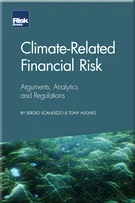Stress Testing
Stress Testing
Starting at the Top
Setting Up the Problem
Considering Multiple Vintages
Curve Taxonomy
Scenario-Based Forecasting
Stress Testing
Volatility Analysis and Economic Capital
Portfolio Optimisation
Credit Scores and Account Management
Analysis of the US Mortgage Crisis
An Example Using SETI@home Data
Examples of Modelling Vintages
Epilogue: it’s about time
Stress testing was first developed in engineering. Aeroplanes, cars, buildings, ships, power grids and more all go through stress tests during design and construction to make sure they can withstand a plausible range of stressful events. A stress test revealed that the Citibank tower in Manhattan was vulnerable to severe damage in a hurricane, so remedial action was taken and a possible disaster was averted (Morgenstern 1995). Stress tests in New Orleans showed that the levees were vulnerable to breach in a severe hurricane (Walsh 2006) and that the stress tests previously created during the levee design used hurricanes that were not severe enough (Schwartz 2006). Unfortunately, the designs were not improved and the planned repairs were too slow and insufficient – leading to the 2005 Hurricane Katrina disaster (van Heerden 2007). Starting in 2009, the banking world changed and stress tests are likely to have become a permanent part of lending.
Many things have been called stress tests through the years, but the assumption here is that stress testing involves correlating historical macroeconomic data to portfolio performance, creating an extreme macroeconomic scenario and
Copyright Infopro Digital Limited. All rights reserved.
As outlined in our terms and conditions, https://www.infopro-digital.com/terms-and-conditions/subscriptions/ (point 2.4), printing is limited to a single copy.
If you would like to purchase additional rights please email info@risk.net
Copyright Infopro Digital Limited. All rights reserved.
You may share this content using our article tools. As outlined in our terms and conditions, https://www.infopro-digital.com/terms-and-conditions/subscriptions/ (clause 2.4), an Authorised User may only make one copy of the materials for their own personal use. You must also comply with the restrictions in clause 2.5.
If you would like to purchase additional rights please email info@risk.net









